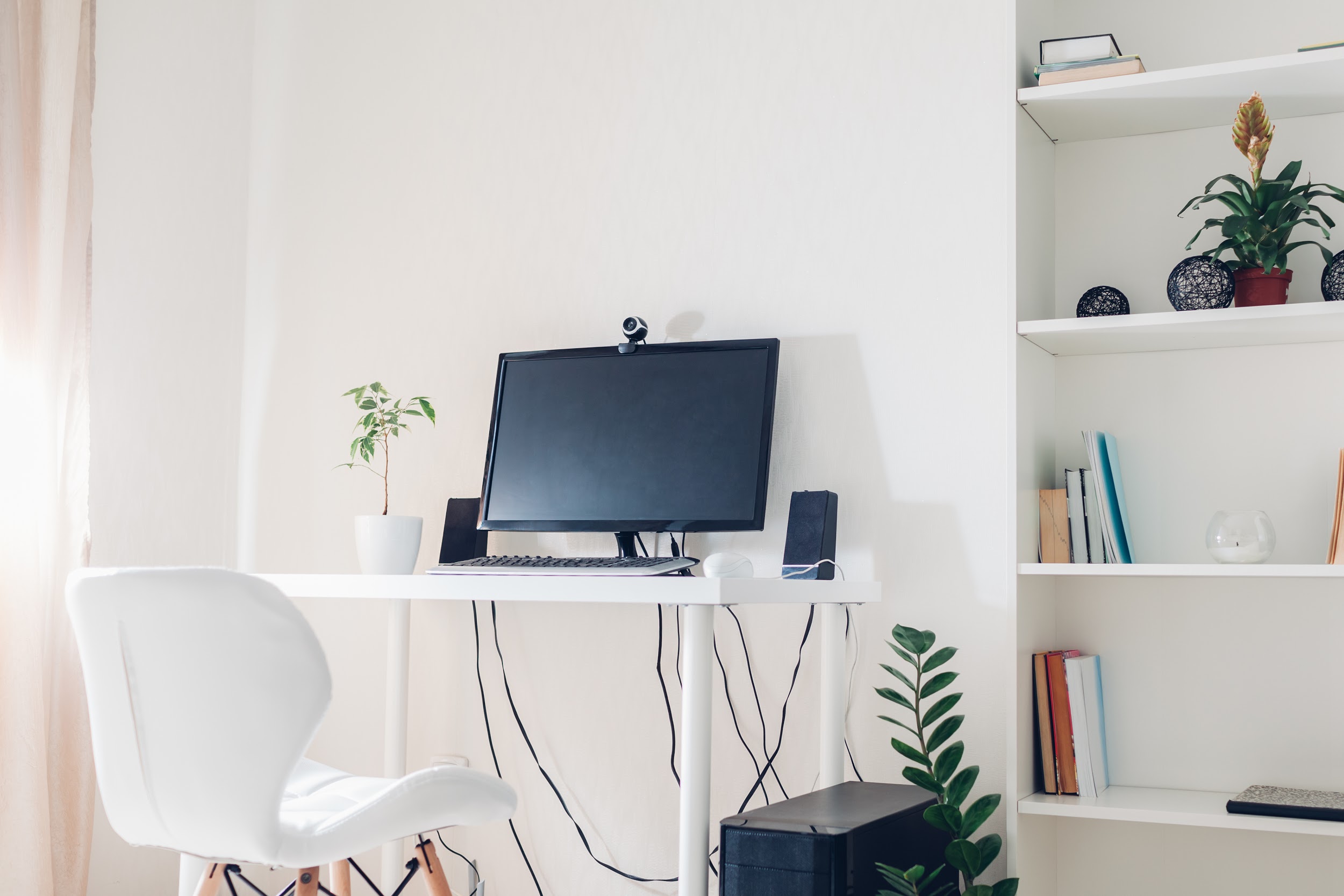7 Surprising Tips for Working from Home (#4 is a Must)
Working from home has become a more common practice during the coronavirus pandemic, but it’s been an idea many employers have explored even before quarantine. Working virtually has been found to increase productivity, improve work/life balance, and save the time, hassle, and money involved with commuting.
However, bad habits can be very counterproductive even for those who are more accustomed to this arrangement. Here are some tips for working from home effectively that new and seasoned remote workers can benefit from.
1. Create a Functional Workspace
You should have a designated workspace in your home. Separate from your personal space, it needs to be obvious to you and others in your household. A spare room works best. But since not everyone has one of those available, you can also set aside space in a basement, guest room, or dining room. A living room couch, although it can be used occasionally, is not a productive permanent office solution.
Even if your workspace is just a separate corner, it should be set up as an office. It needs a table or corner computer desk and an ergonomic chair you are comfortable in for eight hours a day. Add natural lighting and don’t be afraid to decorate the space as you would a traditional office space.
Just be sure to separate your work from your downtime space. At the end of the workday, turn off the computer or, if using the same machine for personal tasks, close any programs related to your job.
2. Set a Schedule
While working from home lends itself to greater flexibility, you need a schedule. It’s important to set regular hours and stick to them as much as possible. You’ll only get things done if you set clear goals. However, your workday doesn’t have to be 9-to-5. Structure your day around when you know you’re most productive.
Other factors to consider when scheduling include when you’ll need to communicate with coworkers and customers, and, of course, when your boss requires you to be available. Be at your work desk when people expect you to be there. Let others know your availability and when there are changes to your normal schedule.
When structuring your work time, also:
- Act like you’re going to a job: Set your alarm to be up at a certain time, have coffee, take a shower, and get dressed as if you’re going to the office, which helps prepare you mentally.
- Establish a transitional routine: Give yourself time to prepare for work. If you read during a commute, do so before starting work. Catch the latest episode of your favorite podcast while you’re making breakfast.
- Give yourself time to wind down: The evening commute often serves as a time to wind down; you can do this at home by taking a walk, watching TV, or engaging in some other relaxing activity before cooking, cleaning, or other chores.
Remember, finding your best rhythm helps you be more consistent and set realistic expectations. Stop working when it’s time to. You’re no use to anyone if you’re burnt out. When you need to put in extra hours for a particular project, compensate with extra time off later.
3. Make Sure You’re Equipped
If you don’t have all the equipment you need, ask your employer to supply it. Is your personal computer able to handle office applications? Ask your employer if using it is okay and whether they can help keep your work secure. Some remote workers use a virtual private network (VPN) to protect data.
Does your employer provide a printer or other office equipment, can you use your own cell phone for work calls, and does your internet provider offer enough data in your plan? Communicate everything you need with your employer so you are properly equipped to work from home.
4. Take Breaks
While staying motivated and productive are crucial for working at home successfully, taking breaks is high up on the list. Schedule break time other than your lunch hour. This means getting away from the desk and computer. Go out for a walk or have a snack or tea. Plan something that will get you away from work, which will help reset your mind.
One study found people were most productive when they worked intensively for 52 minutes at a time, took a 17-minute break, and got back into it. Breaks rest the brain and increase the attention span. Try something like working 50 minutes and taking a 15 to 20 minute break to refresh your brain cells throughout the day.1
If you’re finding it difficult to focus, try using a productivity timer. The Pomodoro Method was developed as a time management technique in the 1990s. It prioritizes breaks as much as timing your work. To start, it involves working on specific tasks in 25-minute intervals, with 5-minute breaks in between. After four cycles, you can take a 15 to 30 minute break. Read more information on the Pomodoro Method if you’re interested in exploring this approach.2
5. Stay in Touch
Communicate with your manager and coworkers by phone, email, conference call, video chat, or any other means available that you would ordinarily use. If you need assistance, contact the same people you’d ask for help in the office. Be sure to respond quickly to questions or requests, so your staff doesn’t need to wait. If you’re bogged down with tasks or need a break, just tell them you’ll be back in a few minutes.
Socializing can be a challenge when you work from home, but you can engage in informal interactions with coworkers. Ask about their weekend or a book they read. If your employer sets up time for virtual workers to socialize and catch up, take advantage of it. This might help let off some steam and let you work more productively.
6. Avoid Being Too Rigid
Mixing work and home life might contradict our other tips for working from home effectively. However, sometimes it’s best to go with the flow. Don’t obsessively try to force being productive if life isn’t letting it happen. Kids or dog begging to go outside? Time for a walk. Or, if you have a brilliant idea at 3:00 a.m., outline a concept or a work plan for the day, and then get some more rest. This level of flexibility is better for your overall productivity and well-being.
7. Hire a Virtual Assistant
There are times when you’re not there to take a call, but you want to provide the service your clients deserve. No one can be on top of their game 24/7—but AnswerMTI can.
Our virtual receptionists take messages, route callers, set appointments, answer questions, and provide any other type of customer service. They are available outside of business hours and are trained to meet the needs of businesses in any industry. Unlimited call scripting means our professional receptionists can handle any situation, while bilingual support means your business can serve more customers.
From startups to Fortune 500 companies, AnswerMTI is here to help. To learn more about our services and discuss your requirements, call 844-798-1027 today.
Source:







